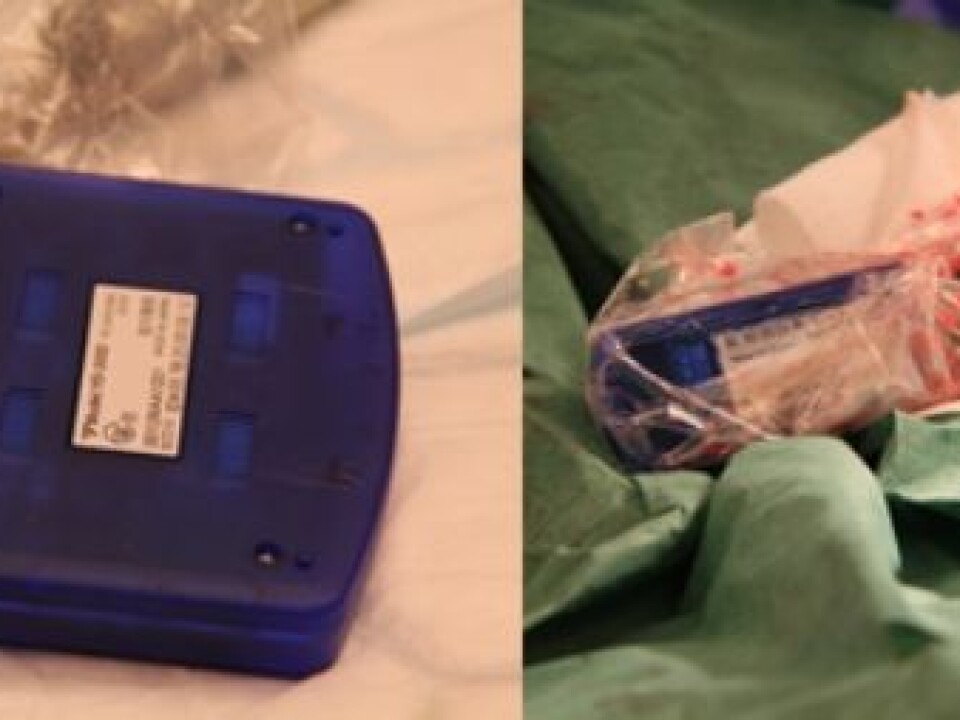This article was produced and financed by The Research Council of Norway

Full HD and GPS in a camera pill
Cameras ingested in the form of a pill make it possible to examine areas of the stomach and intestines that cannot be reached using traditional equipment.
Denne artikkelen er over ti år gammel og kan inneholde utdatert informasjon.
Camera pills are used to take photos inside the stomach and intestine in order to detect abnormalities such as bleeding or cancer. They are highly effective in examining the small intestine, where the traditional methods of endoscopy or gastroscopy fall short.
Norwegian researchers from many areas of expertise have joined forces in an interdisciplinary project to develop a new, advanced type of camera pill. Preliminary test results are encouraging.
Combination of new technologies
In order to develop a camera pill with the desired properties the pill must be able to transmit information by radio waves through the patient. To keep pill size to a minimum, the amount of data transmitted needs to be significantly compressed.

It is important for doctors to know exactly where the camera pill is located inside the patient when filming. This means that the pill must be equipped with GPS so that it can send and receive information about its location.
“Our pill will employ wireless ultra-wideband technology with enough bandwidth to handle live, high-quality video transmission of observations from the intestine,” says Ilangko Balasingham, project manager at Oslo University Hospital’s (OUS) Intervention Centre. “It will also communicate its coordinates via radio so that the doctors can pinpoint its location in the body.”
In order to work as intended, the new pill needs to be equipped with a battery larger than the current one and a light source to make the film transmitted from within the intestine visible. Using a new compression algorithm, researchers at the Norwegian University of Science and Technology (NTNU) have been able to compress the video to 3 percent of its original size - enough to provide video of sufficient quality.
Effective on pigs

Researchers at OUS were the first in the world to study the weakening of high-frequency radio waves passing through tissue, creating a model to calculate the effect.
Tests, where an antenna device was placed against the skin of pigs, indicate that it is possible to receive strong video signals as long as the transmitter is located within a depth of 5 cm in the abdomen or the chest cavity. The deeper the transmitter is located, the weaker the signals become.
Examining tissue with radar
The material properties of damaged tissue - such as cancer tissue - differ from those of healthy tissue.
The researchers at the Norwegian Defence Research Establishment (FFI) are working on a radar solution which outperforms video, enabling the pill to observe more deeply inside the stomach and intestine and to provide feedback as to whether the tissue is healthy or damaged.
This new type of camera pill might give us entirely new possibilities for diagnosing illness and planning more customised treatment. But it does not stop there: This same technology may also have a promising future in industrial areas.
“We envision using the camera pill for purposes such as looking for damage in underwater oil pipes,” states Balasingham.
-------------------------------------------
Read the article in Norwegian at forskning.no
Translated by: Glenn Wells og Carol B. Eckmann






























